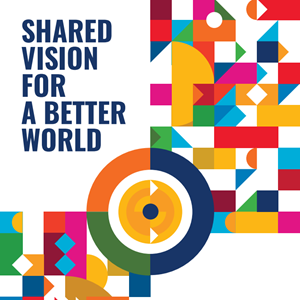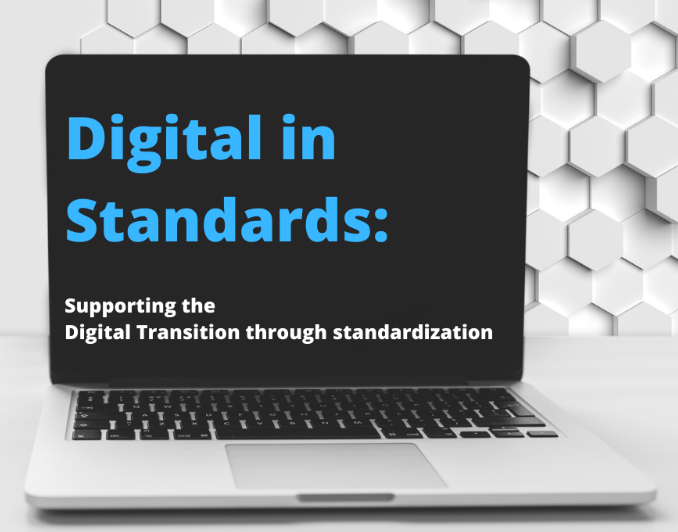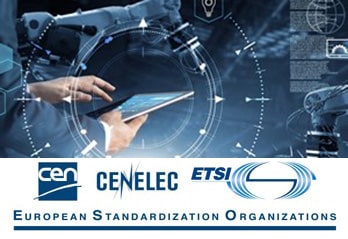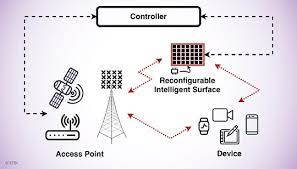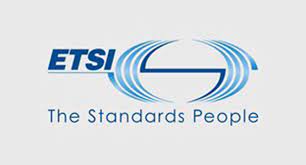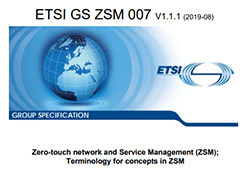The insurance business is rapidly migrating from paper-based processes to the digitalization and automation of electronic processes. These electronic business processes take place between independent organizations, which leads to a variety of information formats being used. To facilitate this information exchange, there is a need for the standardization of the data formats being used.
The European standards developed by CEN/TC 445 ‘Digital information Interchange in the Insurance Industry’ are focused on the information exchange between insurance companies and their customers and market partners, e.g., brokers, portals, service providers, and other insurers. In November 2020, CEN/TC 445 published the European standard EN 17419-1:2020, which specifies the transfer of electronic documents.
As a follow-up to this Standard, CEN/TC 445 recently published CEN/TR 17419-2:2021 'Implementation Specification for EN 17419-1'. This European technical report describes a concrete specification for an implementation of the EN 17419-1 in a microservice architecture, using REST/JSON based on the Open API 3.0 specification. In addition, it contains a complete API definition for the services implementing the transfer of documents.
DIN, DKE & VDI developing the German Standardization Roadmap for Circular Economy
Together with the German Federal Ministry for the Environment, Nature Conservation and Nuclear Safety (BMU), the German Institute for Standardization (DIN) and the German Commission for Electrical, Electronic & Information Technologies (DKE) of DIN and VDE and the Association of German Engineers (VDI) have announced the launch of the German Standardization Roadmap Circular Economy. The aim of the Standardization Roadmap is to provide an overview of the status quo of standardization in the field of Circular Economy, describe the requirements and challenges for seven key topics, and identify possible concrete needs for action for future standards and specifications.
-
Essential support for climate targets: The Circular Economy is of particular importance in achieving the goals of the Green Deal and the Climate Change Act 2021. To achieve the ambitious climate protection targets, new and revised technical rules for the Circular Economy are now needed. The Standardization Roadmap Circular Economy will set the path for this, thus driving forward the green transformation of Germany and Europe.
-
Seven key topics set: The Roadmap will focus on the following key topics: Electrotechnology and ICT, batteries, packaging, plastics, textiles, construction & municipalities, and digitalization/business models/management. These are based on the key topics of the EU's Circular Economy Action Plan. With a German Standardization Roadmap for Circular Economy, specific national standardisation needs will be identified with the aim of feeding them into the European and international standardisation bodies.
The Digital Transition is an opportunity for Europe to boost its competitiveness in global markets. European Standards play a key role in this ambition, seeing as they:
-
promote security and safety for products and services
-
build trust in emerging technologies
-
work to find consensus and enable state of the art solutions for Europe
This brochure is meant to highlight not just what exists for the future of standardization in the digital transition, but to look at the new and exciting fields that standardization plans to explore.
A New Standard Contributes to Improving the Energy Efficiency of Jet Fans
When talking about energy efficiency, one of the most overlooked appliances is fans. Fans of all types are used for ventilation and air conditioning, for process engineering, and agriculture. Their energy use has been calculated as nearly 20% of total worldwide energy usage. To ensure that the fan performance characteristics are common throughout the world, a series of standards has just been developed by ISO and adopted by CEN.
Among these, the recently published EN ISO 12759-5 'Fans-Efficiency classification for fans - Part 5: Jet fans' establishes a classification of fan efficiency for all jet fan types driven by motors with an electrical input power range from 5,5 kW to 155 kW. Jet fans are used for producing a jet of air in a space, unconnected to any ducting. They find applications in the control of quality of air in vehicle and train tunnels, as well as in enclosed car parks, and their use has become increasingly popular (from EN ISO 13350:2015 'Fans - Performance testing of jet fans').
This document was prepared by Technical Committee ISO/TC 117 'Fans', in collaboration with the CEN/TC 156 'Ventilation for buildings', whose Secretariat is held by BSI, the British Standards Institute.
The event is dedicated to discussing a study DIGITALEUROPE carried out on the future of cybersecurity for the Internet of Things (IoT). The study takes place in a context of enhanced attention to ensuring the security of IoT devices and makes proposals for decision-makers: the European Commission has put forward several policy proposals to introduce cybersecurity requirements on connected devices. Furthermore, the IoT, in both its consumer and industrial aspects, is also expected to be one of the future areas for cybersecurity certification pursuant to the Cybersecurity Act.
After the presentation of the results, CEN and CENELEC’s work on cybersecurity was presented during an interactive discussion with other high-level speakers, representing the European Commission, civil society organisations, national authorities, the industry and other European Standards Organisations. More information on the panel and on how to subscribe are available on DIGITALEUROPE’s website.
Industrial data has become one of the top strategic priorities for European and international industry in the recent years. Well managed and duly exploited, industrial data bring a significant competitive edge to businesses and can greatly improve overall efficiency, be it by supporting core processes or by providing a new source of insights.
In this data-driven era, industrial data play an essential role in building the foundation of the next wave of digitization in Europe. For this reason, it is key to the success of a harmonised Single Market and European competitiveness in the global market, but also for the success of the twin transition (green and digital) at the heart of the EU policy agenda.
Industrial data is of ever-increasing importance for companies in Europe and the world, and particularly so in the context of the digitization of industry. On this topic, on 28 Sept, CEN, CENELEC and ETSI co-organised an online stakeholders’ workshop dedicated to exploring how standards can support the industrial data value chain.
ETSI Releases two Technical Reports to Support US NIST Standards for Post-Quantum Cryptography
In 2016 the US National Institute of Standards and Technology (NIST) announced their intention to develop new standards for post-quantum cryptography. They subsequently initiated a competition-like standardization process with a call for proposals for quantum-safe digital signatures, public-key encryption schemes, and key encapsulation mechanisms. NIST have stated that they intend to select quantum-safe schemes for standardization at the end of the current, third round of evaluation. The ETSI CYBER Quantum Safe Cryptography committee is pleased to announce the publication of two Technical Reports that give descriptions of each of the candidate schemes in the third round of the NIST standardization process:
-
ETSI TR 103 616 V1.1.1 (2021-09) "Quantum-Safe Signatures"
-
ETSI TR 103 823 V1.1.1 (2021-09) "Quantum-Safe Public Key Encryption and Key Encapsulation"
The descriptions contained in the reports are not intended to be used as substitutes for the detailed specifications submitted to the NIST process. Instead, the emphasis is on providing unified, concise descriptions of each of the schemes, using consistent notation and terminology, to facilitate understanding and easy comparison.
ETSI, which produces globally applicable standards for ICT, has launched a new Industry Specification Group on Reconfigurable Intelligent Surfaces (ISG RIS). The group has been created to review and establish global standardization for RIS technology.
RIS is a new type of system node leveraging smart radio surfaces with thousands of small antennas or metamaterial elements to dynamically shape and control radio signals in a goal-oriented manner. The technology will effectively turn the wireless environment into a service, inspiring a host of new use cases. These include enhancing key-performance-indicators for various systems such as coverage and capacity, as well as enabling new applications such as localization and sensing. As an example, an RIS can reconfigure the radio environment to sense human posture and detect someone falling, a very useful application for elderly care. RIS, thanks to its associated characteristics, is expected to serve as a key technology in future wireless systems, including for 6G.
ETSI’s new Industry Specification Group will work towards defining use cases, covering identified scenarios, and clearly documenting the relevant requirements with view to pave the way for future standardization of the technology.
ETSI's 5th Generation Fixed Network group (F5G ISG) has just released its first specification, ETSI GS F5G 003, entitled F5G Technology Landscape. In this specification, the ISG studies the technical requirements, existing standards and gaps for 10 different new use cases, for home, enterprises or industrial needs.
ETSI GS F5G 003 use cases include PON (passive optical network) on-premises and passive optical LAN. In this case, a PON system could connect end devices (like HDTV, HD surveillance cameras and VR/AR helmets) and provide higher data rate, better coordination, and controlled latency than current Ethernet and Wi-Fi mesh.
The high-quality private line use case focuses on optical transport networks (OTN) for governments, large companies, financial and medical institutions who need guaranteed bandwidth, low latency, five-nines availability, totally secured network, access to Cloud services and intelligent operation and maintenance of their connectivity. PON enables high quality but low-cost private lines for SMEs and offers higher performance, lower cost, better industrial adaptation, and easier operation for the industrial customers as well.
ETSI is pleased to announce the release of three major specifications and reports developed by its Zero-touch network and Service Management (ZSM) group. ETSI GS ZSM 003, defines end-to-end network slicing management and orchestration architecture blueprint and solutions, and ETSI GS ZSM 009-1 specifies the enablers for closed-loop automation. The general security aspects related to the ZSM framework and solutions and potential mitigation options are introduced in the ETSI GR ZSM 010.
-
ETSI GS ZSM 003 defines an architecture blueprint and solutions for zero-touch management and orchestration of end-to-end, cross-domain network slicing – supporting both fulfilment and assurance processes. Network slicing spans different technological domains, from the User Equipment (UE) through, for example, the access network, transport network, core network, to the application.
-
ETSI GS ZSM 009-1 specified “Governance” services that allow the creation, execution, and life-cycle management of a closed loop, as well as the steering of its behavior. A closed loop enables the continuous optimization and adaption of network and resource utilization as well as automated service assurance and fulfilment.
ETSI GR ZSM 010 identifies potential security threats related to the ZSM framework and solutions, and proposes mitigation options that should be considered by the ZSM specifications to ensure that the automated processes are secured and deliver the intended business outcomes.







